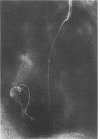Abstract
BACKGROUND--The effects of streptokinase on the occurrence of a combined clinical outcome in patients presenting with recent chest pain and ST depression were investigated in view of the role of thrombus in the pathogenesis of acute ischaemic syndromes. METHODS--112 patients aged < or = 75 years presenting within 6 h of the last episode of ischaemic chest pain of least 20 min duration with > or = 1 mm ST depression were randomised in a double blind manner to receive either streptokinase 1.5 million units over 30 min (n = 57) or placebo (n = 55). The primary end point was the combination of death, frequency of myocardial infarction (defined as peak creatine kinase > 600 U/ml), need for angiography because of uncontrollable ischaemia, and an exercise test within 35 days showing > or = 1 mm ST depression at < or = 6 min. The secondary end points were safety, frequency of chest pain, readmission with myocardial infarction or unstable angina, or need for revascularisation between 35 days and 1 year. The severity of ST depression on presentation was analysed with respect to clinical outcome. RESULTS--The frequency of the combined hierarchical end point of death, myocardial infarction, early angiography, and a positive exercise test was 82% (47 of 57 patients) with streptokinase and 75% (41 of 55 patients) with placebo. There were four deaths, two in each group. 27 patients (47%) receiving streptokinase and 22 (40%) receiving placebo developed myocardial infarction. 11 patients (eight streptokinase and three placebo) required coronary arteriography and subsequent revascularisation because of angina uncontrolled by medical treatment. 44 patients (22 in each group) had a positive exercise test. There were three further cardiac deaths (one streptokinase, two placebo), and three noncardiac deaths within 1 year. A conservative approach to intervention was adopted and over a period of 1 year 29 patients (26%) (13 streptokinase and 16 placebo) underwent revascularisation procedures. Three patients (two streptokinase and one placebo) required transfusion. ST depression > or = 3 mm had 90% specificity but only 60% positive predictive value for myocardial infarction at presentation (P = 0.008, stepwise logistic regression). ST depression > or = 2 mm was predictive of death, late development of myocardial infarction, or a need for angiography (P = 0.02). CONCLUSION--Patients presenting with ischaemic chest pain and ST depression frequently develop myocardial infarction. Severe ST depression is predictive of an adverse outcome. The 35 day (3.6% cardiac and total) and 1 year mortality (8.9% total, 6.3% cardiac) are low with conservative management and expeditious revascularisation. Streptokinase treatment within 6 h of the last episode of pain does not seem to be beneficial.
Full text
PDF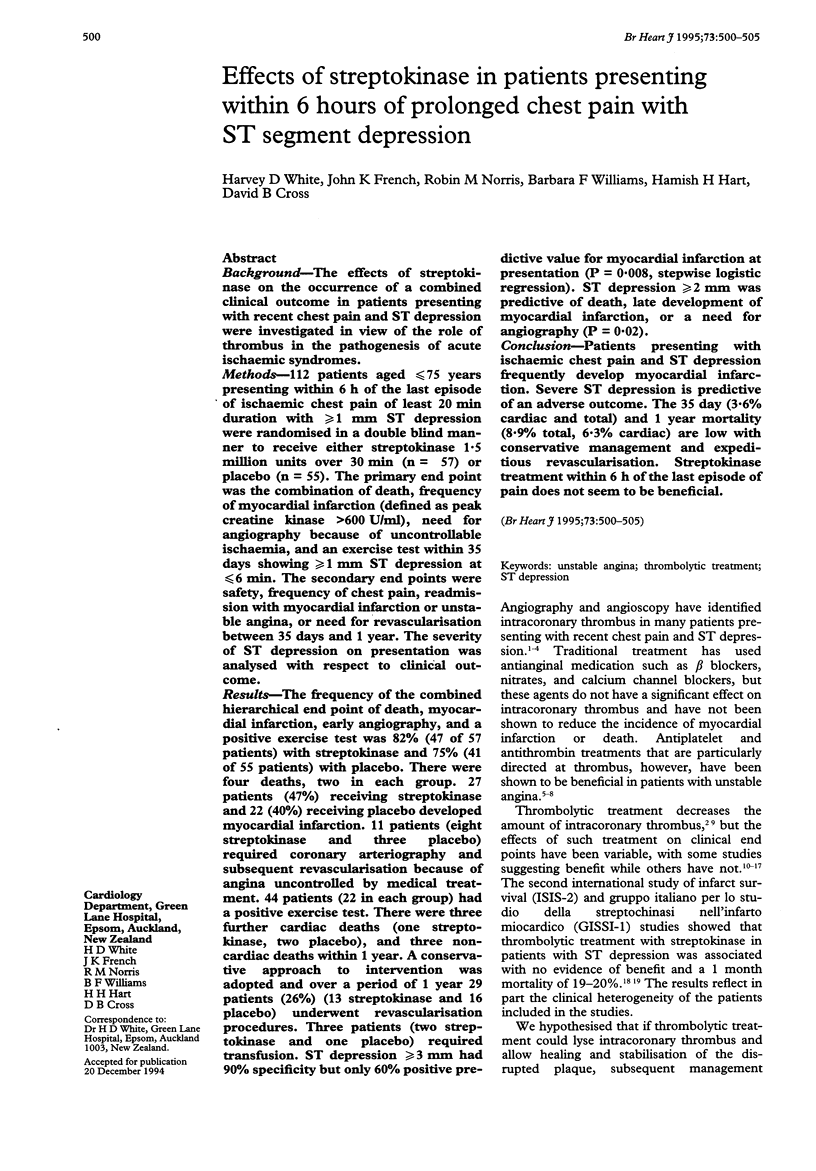
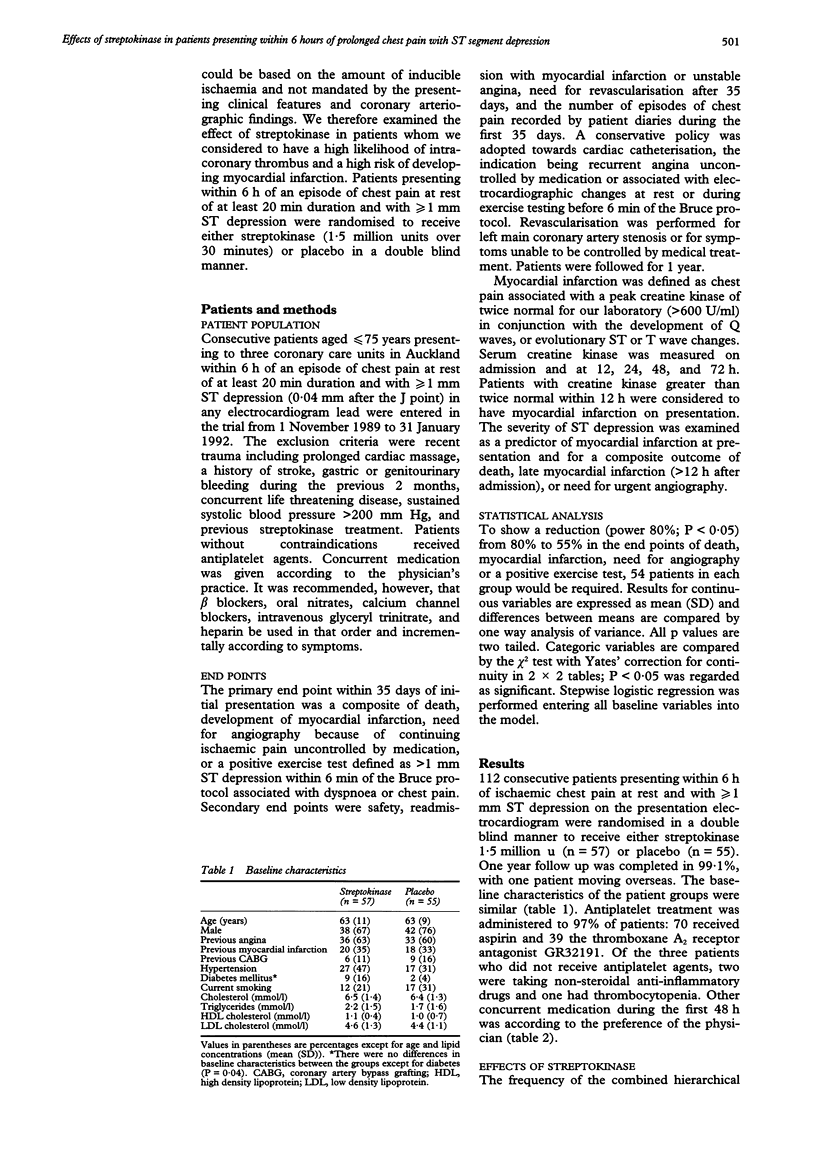
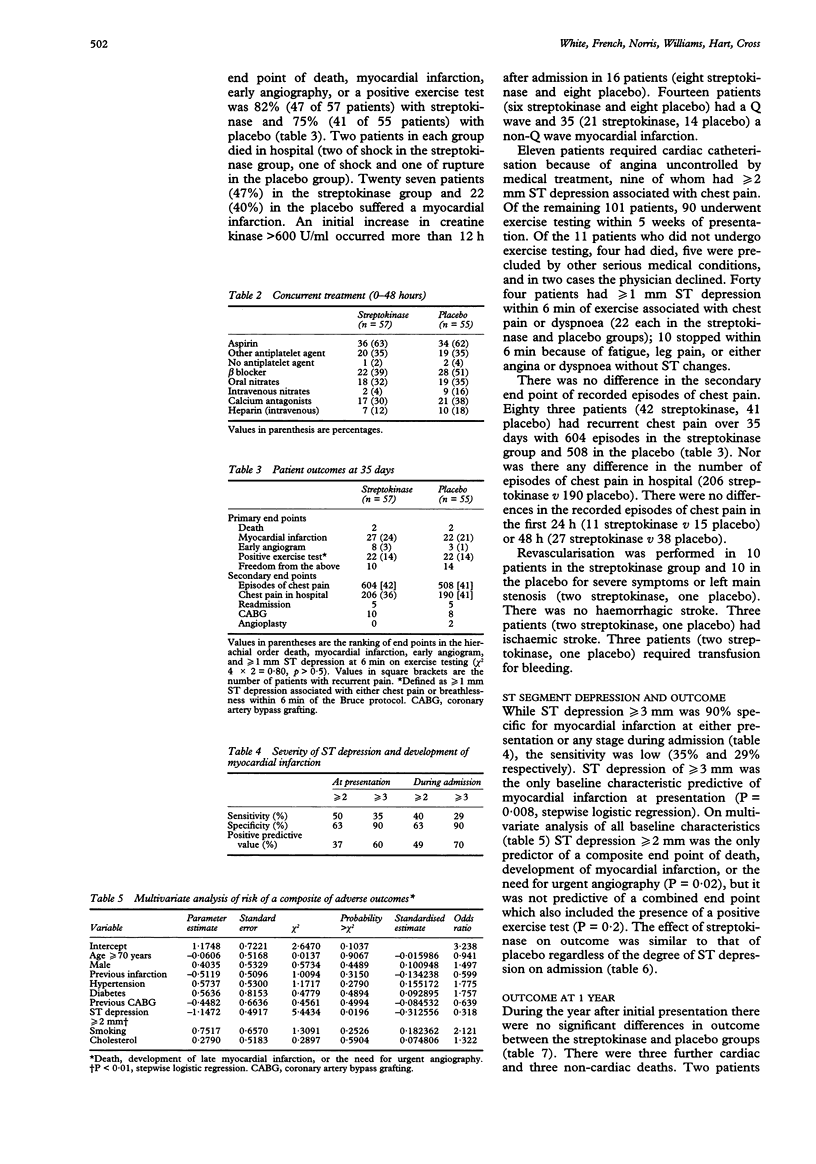
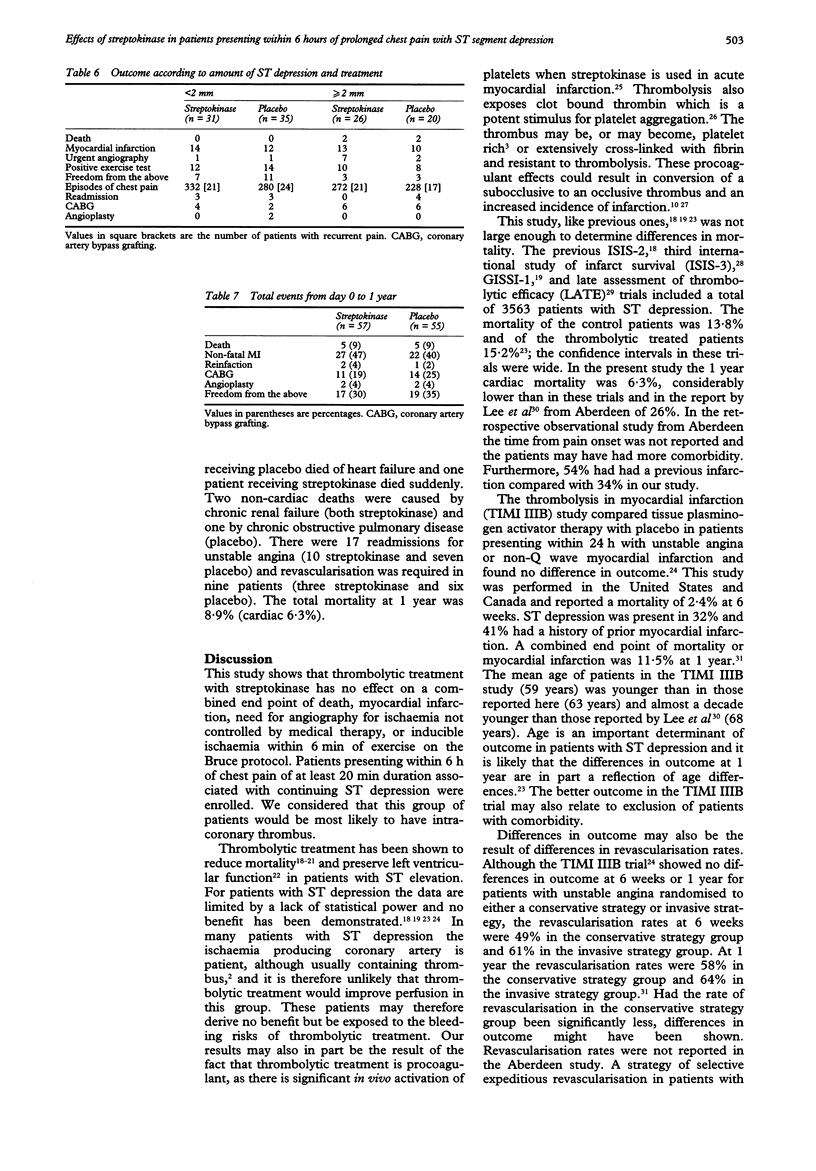
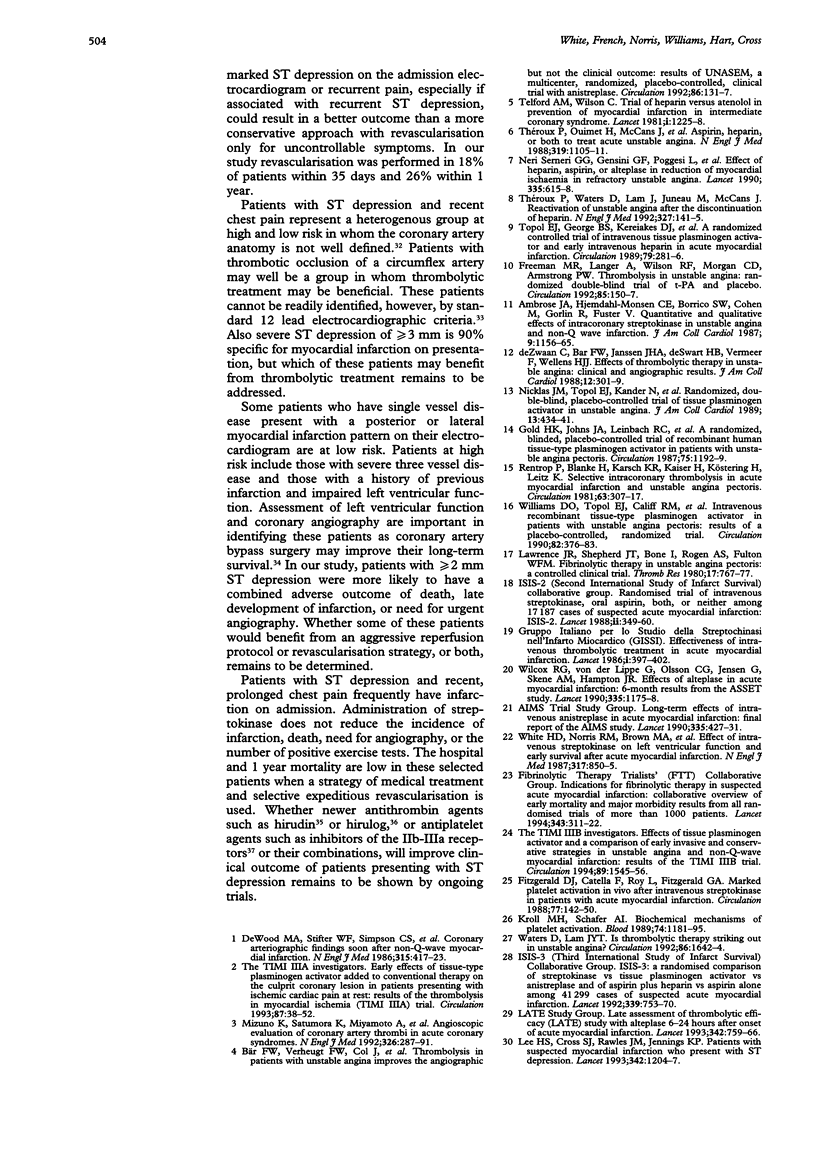
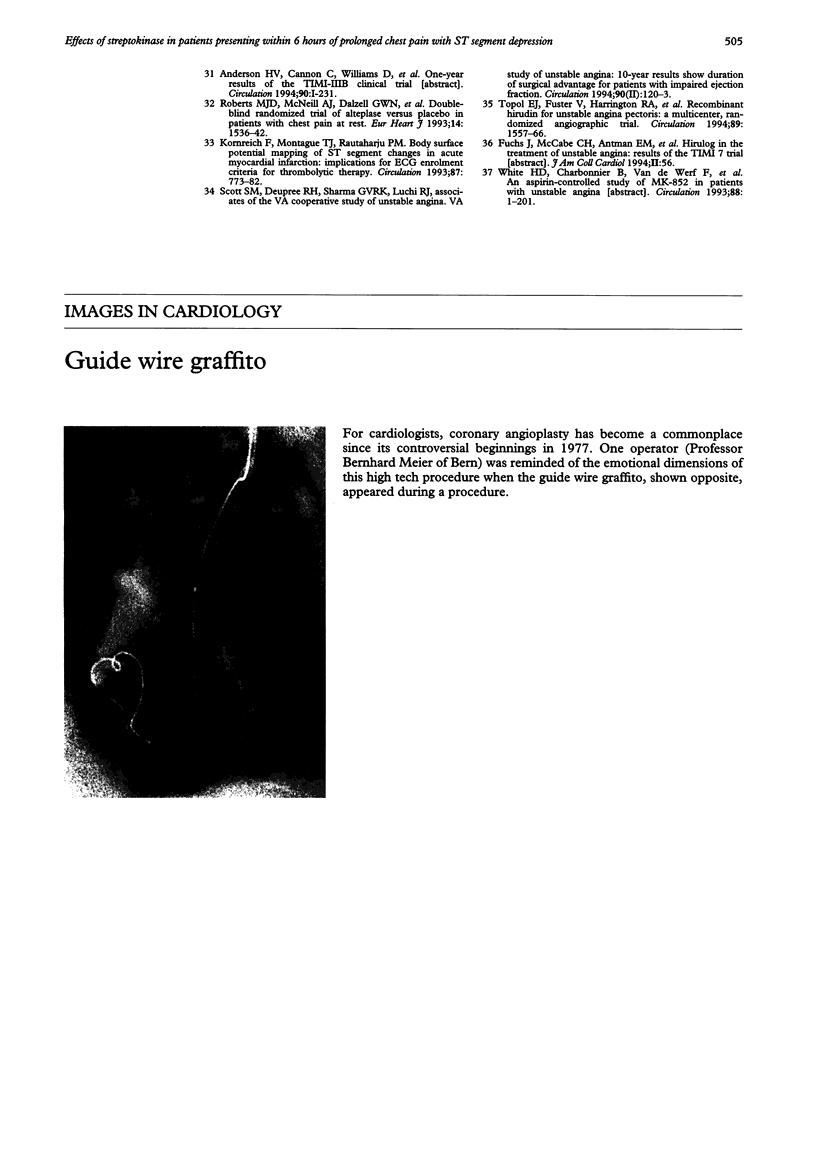
Images in this article
Selected References
These references are in PubMed. This may not be the complete list of references from this article.
- Ambrose J. A., Hjemdahl-Monsen C., Borrico S., Sherman W., Cohen M., Gorlin R., Fuster V. Quantitative and qualitative effects of intracoronary streptokinase in unstable angina and non-Q wave infarction. J Am Coll Cardiol. 1987 May;9(5):1156–1165. doi: 10.1016/s0735-1097(87)80321-2. [DOI] [PubMed] [Google Scholar]
- Bär F. W., Verheugt F. W., Col J., Materne P., Monassier J. P., Geslin P. G., Metzger J., Raynaud P., Foucault J., de Zwaan C. Thrombolysis in patients with unstable angina improves the angiographic but not the clinical outcome. Results of UNASEM, a multicenter, randomized, placebo-controlled, clinical trial with anistreplase. Circulation. 1992 Jul;86(1):131–137. doi: 10.1161/01.cir.86.1.131. [DOI] [PubMed] [Google Scholar]
- DeWood M. A., Stifter W. F., Simpson C. S., Spores J., Eugster G. S., Judge T. P., Hinnen M. L. Coronary arteriographic findings soon after non-Q-wave myocardial infarction. N Engl J Med. 1986 Aug 14;315(7):417–423. doi: 10.1056/NEJM198608143150703. [DOI] [PubMed] [Google Scholar]
- Fitzgerald D. J., Catella F., Roy L., FitzGerald G. A. Marked platelet activation in vivo after intravenous streptokinase in patients with acute myocardial infarction. Circulation. 1988 Jan;77(1):142–150. doi: 10.1161/01.cir.77.1.142. [DOI] [PubMed] [Google Scholar]
- Freeman M. R., Langer A., Wilson R. F., Morgan C. D., Armstrong P. W. Thrombolysis in unstable angina. Randomized double-blind trial of t-PA and placebo. Circulation. 1992 Jan;85(1):150–157. doi: 10.1161/01.cir.85.1.150. [DOI] [PubMed] [Google Scholar]
- Kornreich F., Montague T. J., Rautaharju P. M. Body surface potential mapping of ST segment changes in acute myocardial infarction. Implications for ECG enrollment criteria for thrombolytic therapy. Circulation. 1993 Mar;87(3):773–782. doi: 10.1161/01.cir.87.3.773. [DOI] [PubMed] [Google Scholar]
- Kroll M. H., Schafer A. I. Biochemical mechanisms of platelet activation. Blood. 1989 Sep;74(4):1181–1195. [PubMed] [Google Scholar]
- Lawrence J. R., Shepherd J. T., Bone I., Rogen A. S., Fulton W. F. Fibrinolytic therapy in unstable angina pectoris. A controlled clinical trial. Thromb Res. 1980 Mar 15;17(6):767–777. doi: 10.1016/0049-3848(80)90242-x. [DOI] [PubMed] [Google Scholar]
- Lee H. S., Cross S. J., Rawles J. M., Jennings K. P. Patients with suspected myocardial infarction who present with ST depression. Lancet. 1993 Nov 13;342(8881):1204–1207. doi: 10.1016/0140-6736(93)92186-w. [DOI] [PubMed] [Google Scholar]
- Lenfant C. NHLBI funding policies. Enhancing stability, predictability, and cost control. Circulation. 1994 Jul;90(1):1–1. doi: 10.1161/01.cir.90.1.1. [DOI] [PubMed] [Google Scholar]
- Mizuno K., Satomura K., Miyamoto A., Arakawa K., Shibuya T., Arai T., Kurita A., Nakamura H., Ambrose J. A. Angioscopic evaluation of coronary-artery thrombi in acute coronary syndromes. N Engl J Med. 1992 Jan 30;326(5):287–291. doi: 10.1056/NEJM199201303260502. [DOI] [PubMed] [Google Scholar]
- Neri Serneri G. G., Gensini G. F., Poggesi L., Trotta F., Modesti P. A., Boddi M., Ieri A., Margheri M., Casolo G. C., Bini M. Effect of heparin, aspirin, or alteplase in reduction of myocardial ischaemia in refractory unstable angina. Lancet. 1990 Mar 17;335(8690):615–618. doi: 10.1016/0140-6736(90)90407-v. [DOI] [PubMed] [Google Scholar]
- Nicklas J. M., Topol E. J., Kander N., O'Neill W. W., Walton J. A., Ellis S. G., Gorman L., Pitt B. Randomized, double-blind, placebo-controlled trial of tissue plasminogen activator in unstable angina. J Am Coll Cardiol. 1989 Feb;13(2):434–441. doi: 10.1016/0735-1097(89)90524-x. [DOI] [PubMed] [Google Scholar]
- Rentrop P., Blanke H., Karsch K. R., Kaiser H., Köstering H., Leitz K. Selective intracoronary thrombolysis in acute myocardial infarction and unstable angina pectoris. Circulation. 1981 Feb;63(2):307–317. doi: 10.1161/01.cir.63.2.307. [DOI] [PubMed] [Google Scholar]
- Roberts M. J., McNeill A. J., Dalzell G. W., Wilson C. M., Webb S. W., Khan M. M., Patterson G. C., Adgey A. A. Double-blind randomized trial of alteplase versus placebo in patients with chest pain at rest. Eur Heart J. 1993 Nov;14(11):1536–1542. doi: 10.1093/eurheartj/14.11.1536. [DOI] [PubMed] [Google Scholar]
- Telford A. M., Wilson C. Trial of heparin versus atenolol in prevention of myocardial infarction in intermediate coronary syndrome. Lancet. 1981 Jun 6;1(8232):1225–1228. doi: 10.1016/s0140-6736(81)92399-0. [DOI] [PubMed] [Google Scholar]
- Théroux P., Ouimet H., McCans J., Latour J. G., Joly P., Lévy G., Pelletier E., Juneau M., Stasiak J., deGuise P. Aspirin, heparin, or both to treat acute unstable angina. N Engl J Med. 1988 Oct 27;319(17):1105–1111. doi: 10.1056/NEJM198810273191701. [DOI] [PubMed] [Google Scholar]
- Théroux P., Waters D., Lam J., Juneau M., McCans J. Reactivation of unstable angina after the discontinuation of heparin. N Engl J Med. 1992 Jul 16;327(3):141–145. doi: 10.1056/NEJM199207163270301. [DOI] [PubMed] [Google Scholar]
- Topol E. J., Fuster V., Harrington R. A., Califf R. M., Kleiman N. S., Kereiakes D. J., Cohen M., Chapekis A., Gold H. K., Tannenbaum M. A. Recombinant hirudin for unstable angina pectoris. A multicenter, randomized angiographic trial. Circulation. 1994 Apr;89(4):1557–1566. doi: 10.1161/01.cir.89.4.1557. [DOI] [PubMed] [Google Scholar]
- Topol E. J., George B. S., Kereiakes D. J., Stump D. C., Candela R. J., Abbottsmith C. W., Aronson L., Pickel A., Boswick J. M., Lee K. L. A randomized controlled trial of intravenous tissue plasminogen activator and early intravenous heparin in acute myocardial infarction. Circulation. 1989 Feb;79(2):281–286. doi: 10.1161/01.cir.79.2.281. [DOI] [PubMed] [Google Scholar]
- Waters D., Lam J. Y. Is thrombolytic therapy striking out in unstable angina? Circulation. 1992 Nov;86(5):1642–1644. doi: 10.1161/01.cir.86.5.1642. [DOI] [PubMed] [Google Scholar]
- White H. D., Norris R. M., Brown M. A., Takayama M., Maslowski A., Bass N. M., Ormiston J. A., Whitlock T. Effect of intravenous streptokinase on left ventricular function and early survival after acute myocardial infarction. N Engl J Med. 1987 Oct 1;317(14):850–855. doi: 10.1056/NEJM198710013171402. [DOI] [PubMed] [Google Scholar]
- Wilcox R. G., von der Lippe G., Olsson C. G., Jensen G., Skene A. M., Hampton J. R. Effects of alteplase in acute myocardial infarction: 6-month results from the ASSET study. Anglo-Scandinavian Study of Early Thrombolysis. Lancet. 1990 May 19;335(8699):1175–1178. [PubMed] [Google Scholar]
- Williams D. O., Topol E. J., Califf R. M., Roberts R., Mancini G. B., Joelson J. M., Ellis S. G., Kleiman N. S. Intravenous recombinant tissue-type plasminogen activator in patients with unstable angina pectoris. Results of a placebo-controlled, randomized trial. Circulation. 1990 Aug;82(2):376–383. doi: 10.1161/01.cir.82.2.376. [DOI] [PubMed] [Google Scholar]
- de Zwaan C., Bar F. W., Janssen J. H., de Swart H. B., Vermeer F., Wellens H. J. Effects of thrombolytic therapy in unstable angina: clinical and angiographic results. J Am Coll Cardiol. 1988 Aug;12(2):301–309. doi: 10.1016/0735-1097(88)90398-1. [DOI] [PubMed] [Google Scholar]



